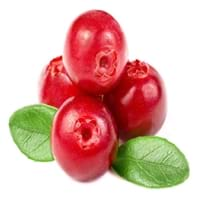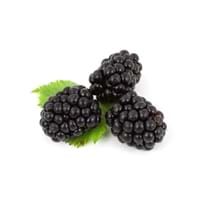Health Benefits
Cancer prevention, Heart care, Kidney stone treatment, Scurvy treatment, Ulcer prevention
Cancer prevention, Heart care, Increases metabolic rate, Reduces stress, Treatment of dysentary, Treatment of skin Diseases
General Benefits
Anti-inflammatory properties, Boosts immune system, Digestive aid, Fights against infections, Strengthens bones
Digestive aid, Maintains healthy cholesterol level, Strengthens bones
Skin Benefits
Anti-aging benefits, Reduces wrinkles, Skin rejuvenation, Treatment of acne
Hydrates skin, Skin rejuvenation, Skin revitalization
Hair Benefits
Promotes longer and healthier hair, Protects hair, Treatment of dandruff
Promotes longer and healthier hair
Allergy Symptoms
Anaphylaxis, Breathing difficulty, Itching, Skin rash, Swelling of mouth, tongue or lips
Facial muscle tension, Pressure in sinus, Respiratory congestion, Runny nose, Sneezing, Tingling sensation in wrist and face
Side Effects
Allergic reaction, Diarrhoea, Nausea, Stomach pain, Vomiting
Nausea, Vomiting, Might cause change of urine color
Best Time to Eat
Any time except an hour after meal, Don't consume at night and before bed
Best if taken as a breakfast (or empty stomach), As a snack in the late afternoon, Don't consume at night and before bed, Eat the fresh ones, avoid mixing with any other foods, don't eat after meal., Morning time (before lunch)
Vitamin B5 (Pantothenic Acid)
Vitamin C (Ascorbic Acid)
Vitamin K (Phyllochinone)
Calories in Fresh Fruit with Peel
Calories in Fresh Fruit without Peel
Not Available
Not Available
Calories in Pie
Not Available
Season
Autumn
Spring, Summer
Varieties
Early Black, Howes, Ben Lear and Stevens
Prime Ark, Prime Jim, Illini Hardy, Kiowa, Shawnee, Apache, Arapaho, Chester, Hull, Natchez, Navaho and Triple Crown and Von
Inside Color
White
Magenta
Taste
Bitter, Tart
Juicy, Sweet
Origin
North America
Asia, Europe, North America, South America
Soil Type
Clay, Sandy, Well-drained
Well-drained
Climatic Conditions
Warm
Dry, Warm to hot climate
Facts about
- Europeans thought the cranberry blossom looked like the head of a sandhill crane, hence the name Cranberry.
- They are also known as bounce berries as they bounce when they ripe.
- Cranberries do not grow in water.
- There are around 2000 varieties of blackberries throughout the world.
- 80-85 degrees is the ideal temperature for its production.
- Leaves of blackberry tree are used to treat sore throats and mild inflammation of the gums.
Top Producer
United States of America
United States of America
Other Countries
Azerbaijan, Belarus, Bulgaria, Canada, Latvia, Macedonia, NA, Romania, Tunisia, Ukraine
China, New Zealand, Serbia, South Africa
Top Importer
Europe
United States of America
Top Exporter
United States of America
Mexico
Botanical Name
Vaccinium Macrocarpon
Rubus Fruticosus
Synonym
Oxycoccus macrocarpus
Rubus Millspaughii or Rubus Laciniatus
Subkingdom
Tracheobionta
Tracheobionta
Division
Magnoliophyta
Magnoliophyta
Class
Magnoliopsida
Magnoliopsida
Subclass
Dillenhidae
Rosidae
Family
Ericaceae
Rosaceae
Species
Vaccinium macrocarpon
Rubus fruticosus
Difference Between Cranberry and Blackberry
We might think that Cranberry and Blackberry are similar with respect to nutritional value and health benefits. But the nutrient content of both fruits is different. Cranberry and Blackberry Facts such as their taste, shape, color, and size are also distinct. The difference between Cranberry and Blackberry is explained here.
The amount of calories in 100 gm of fresh Cranberry and Blackberry with peel is 46.00 kcal and 43.00 kcal and the amount of calories without peel is Not Available and Not Available respectively. Thus, Cranberry and Blackberry belong to Low Calorie Fruits and Low Calorie Fruits category.These fruits might or might not differ with respect to their scientific classification. The order of Cranberry and Blackberry is Ericales and Rosales respectively. Cranberry belongs to Ericaceae family and Blackberry belongs to Rosaceae family. Cranberry belongs to Vaccinium genus of Vaccinium macrocarpon species and Blackberry belongs to Rubus genus of Rubus fruticosus species. Beings plants, both fruits belong to Plantae Kingdom.









